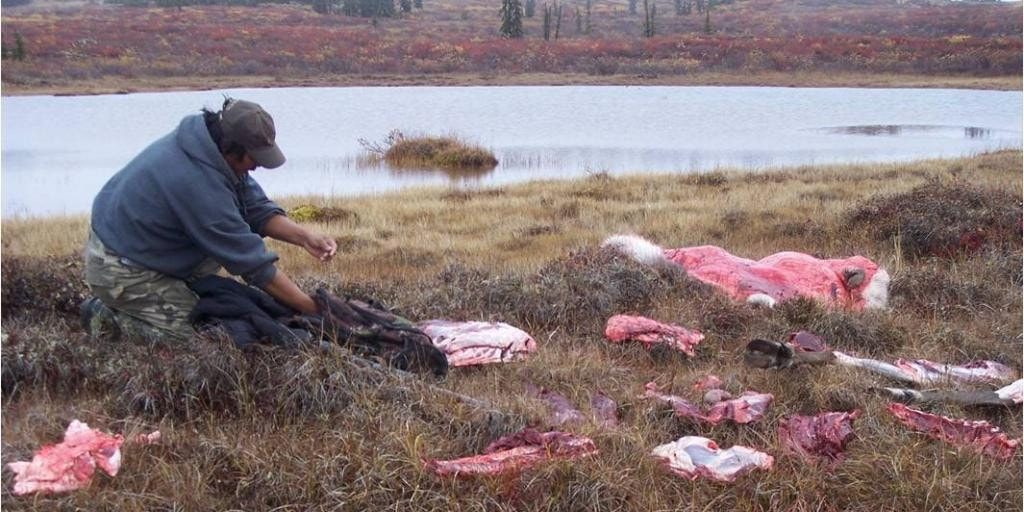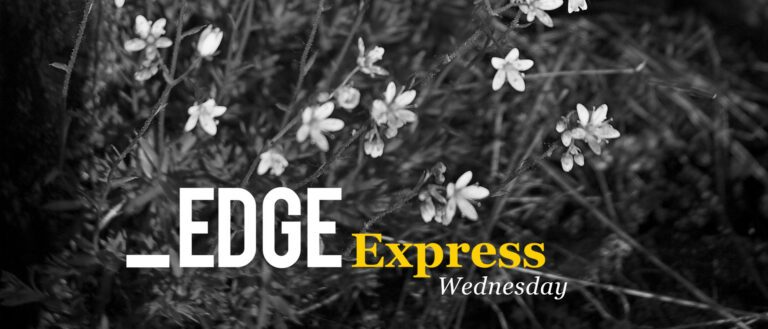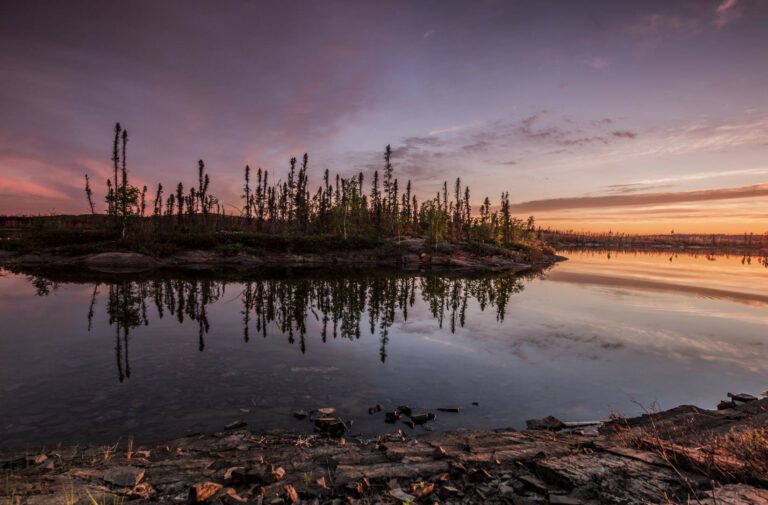Along with a notable drop in Bathurst caribou numbers, the Tłı̨chǫ have been noticing a stark decline in the health of the animals, which many are chalking up to the impacts of mining in the area.
According to interviews with elders and hunters in Wekweètì and Behchokǫ̀, the caribou meat they are harvesting is increasingly covered in cysts and blisters, their lungs and livers coated with pus and mucous, and in general they appear to have less body fat.
The information comes in a new report issued by the Tlįchǫ Research and Training Institute, which brings together local researchers, academics, government and non-governmental organizations and corporations. Over the past three years, researchers met with 14 Tłı̨chǫ elders and hunters in Wekweètì and two in Behchokǫ̀ to gather traditional knowledge about health and migration patterns of the herd, which has declined from an estimated 472,000 in 1986 to between 15,000 and 22,000 in 2015.
“Contributors to the report unanimously identify the establishment of large-scale mines and associated industrial activities on the Bathurst caribou migration route and feeding grounds as the main factor behind caribou health defects and changes to their behaviour and migration,” the report reads. Although it takes care to point out that the information presented is not of a scientific nature. “This TK [Traditional Knowledge] study has documented the anecdotal information on recent changes to caribou physiology, behaviour and migration.
“The next step is to combine the strengths of TK and science, where TK can provide the current conditions of caribou and habitat, and science can establish the biochemical pathways that connect the demonstrated physiological abnormalities to their source; thus, link biology and testimony to the main factors of disturbance.”
Blisters and cysts in the meat
The picture of caribou health the report paints is grim, so much so that several respondents said they were afraid to eat the meat.
“Hunters have observed numerous cases of a white pus-like substance and spots on organs and liver, blisters and cysts in the meat, lungs coated in green mucous/fluids, and attached to the rib cage, altered color and consistency of the bone marrow, and a hardened texture of the hides. None of these phenomena were observed before large-scale mines were developed on the caribou feeding grounds,” says the report.
Furthermore, hunters say that the animals are getting far skinnier. This has potentially disastrous effects: “The decrease of fat reserves can make animals vulnerable to starvation, especially during periods of freeze and thaw, in late fall and spring, when lichen can be covered in ice or crust for prolonged periods, and animals can be prevented from accessing their forage.”
The change in body fat has also, perhaps, led to the significant change in pregnancy rates. As Joseph Judas put it: “All the females are supposed to be having a baby but some of them are not like that, they have no babies! They are supposed to have it but it didn’t happen. But before those [mines] being established, almost all the females used to have babies to go back to the Barrenlands. So in that case it’s a really big change from those times till today.”
Perhaps most disturbing, several respondents reported seeing large numbers of caribou that had died without apparent cause: “From 1999 to present, the hunters have found numerous dead animals lying on the ground. The guides have reported seeing over a hundred deceased animals scattered on the land. Most of the animals had no physical injuries; they had simply bedded down.”
What’s causing it?
For the elders and hunters interviewed, the cause of the poor health is directly related to nearby mining, Ekati in particular.
“The mining activity affects the state of the caribou habitat, both by construction of infrastructure and by creating dust and noise pollution. This negatively affects the state of their food and their habitat,” the report reads. “Dust and chemicals are being absorbed into the vegetation and waters where the caribou forage and drink, and this is likely connected to the physiological changes experienced by Tłı̨chǫ in recent years.”
That said, while, “The report documents a direct correlation between mining activities and health issues… the study does not demonstrate the biochemical pathway linking pollution from mines to the abnormal health issues.”
Since the boom in large-scale mines in the area, the migration routes have also changed, moving progressively further north.
“The caribou avoid the area: the forage quality is poor and the vegetation smells and tastes different, due to dust and pollution spread by winds over the forage areas. Noise pollution, industrial activity and mine site infrastructure also play a role in caribou avoidance of the area. The elders describe how the large-scale, open-pit mines and their associated infrastructure, including a 30-kilometer all-season road from Ek’ati to the open pit at Misery, has established a “wall” around the Ek’atì area and, thus blocked the main migration route.”
“Large herds of caribou were seen every year up until the late 1990s,” the report says. “Hunters say that 1996 and 1997 were good years when lots of caribou came through Wekweètì. But from 1998 and ‘99, changes in the population started to occur. The caribou were still numerous, but not so much as in 1996 and ‘97. During the following years into 2000, the population consistently decreased, up until 2003 and 2005, when caribou started to become hard to find on the Barrenlands northeast of Wekweètì.”
This shifting migration route, combined with the general decline in herd numbers, which the report suggests may also have to do with disrespectful hunting practices, means that, prior to the 2015 hunting ban, many Tłı̨chǫ hunters had to fly north rather than hunt along the traditional migration routes near Wekweètì.
Social Impact
The impact of this is not just on the caribou, but on the hunters themselves and the economy of the Tłı̨chǫ region.
“As the population of caribou has continued to decline, hunting is now banned for Tłı̨chǫ hunters. This means people’s economy — which was built around hunting the Bathurst caribou population in spring and fall — has entered a full recession,” the report says. “Whereas before, Tłı̨chǫ freezers were full of caribou meat, and most community members were occupied with the many activities necessary to secure a living from hunting, the freezers are now empty, and people are increasingly dependent on the monetary system to buy groceries at the local store or in Yellowknife.”







